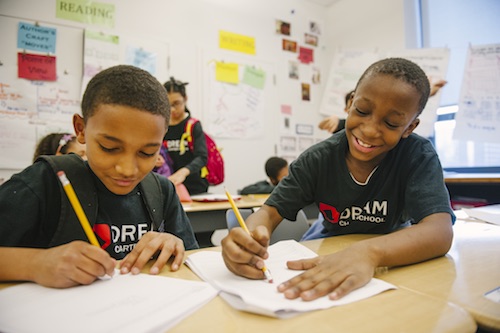Designing Evaluation Frameworks with Development at the Core – Part II: Raising Rubric Rigor
This post is the second in a series on how innovators are reimagining the design and implementation of evaluation and development frameworks. To read our first post in the series, on the impact of frequent observations, click here.

Most teacher evaluation systems today include direct observations of teacher practice by an administrator, in which the administrator determines ratings by assessing what they observed against a common performance rubric. It is challenging to capture the complexity of teaching in a single document, however strong rubrics have the capacity to set clear expectations, establish a common language, and chart a course for development over time.
During our work with school systems across the country, we have seen a few common challenges with widely-used rubrics:
1. Structure: Rubrics can be too long, wordy, and easy to master.
When rubrics are too lengthy, they can be overwhelming or intimidating to educators, fail to prioritize high-leverage teacher actions over lower-impact strategies, take too long for observers to complete and are challenging to norm across multiple raters. Additionally, when rubrics are too “easy”–that is when basic instruction with minimal impact on student learning aligns to language at the highest levels–we rob educators of a true pathway for growth in their careers and limit their potential for excellence.
2. Framing: Rubrics generally focus only on teachers.
When rubrics describe only what teachers are doing and saying they fail to take into account what matters most: the impact of instruction on students. This can limit the value of observation feedback and lead to misalignment between observation ratings and other components of an evaluation framework.
3. Content: Rubrics are often not aligned to today’s raised academic expectations.
When rubrics do not call for rigorous instruction aligned to core content standards (Common Core, Next Generation Science, etc.) they miss the opportunity to set expectations for learning at the appropriate bar. Similarly, as our knowledge of social-emotional learning, cultural competency, and technology expand, many rubrics have yet to adapt and account for new knowledge and skills.
In the face of these challenges, innovators are creating a new normal for observation rubrics. Through our partnership with school systems across the country, we have seen that there is no one right way or perfect rubric. Rather, systems need to consider their unique culture, expectations, observer skill level and existing structures to find or develop a rubric that will work best for them.
DREAM Charter School: DREAM prioritized finding a streamlined observation rubric that would be appropriately rigorous as teacher advances along their career while less cumbersome than the tool they had previously been using. Following research into available tools and piloting of a select few, DREAM identified the TNTP Core Teaching Rubric as the right resource: it was aligned to academic content standards, written in the form of student outcomes, and best of all, was only four pages long! DREAM revised some language to incorporate school-specific competencies that drive their unique student and adult culture. Following the first year of implementation, nearly 80% of teachers said the rubric defines excellent instruction well.
KIPP Houston Public Schools: The original and largest KIPP region is currently piloting the Reach to Rigor rubric, a new tool created in-house that defines academic and cultural expectations for teachers and students. The rubric is broken down into four parts with only the most critical components of great instruction included. The rubric language also includes both teacher and student actions, to ensure that instructional moves by the teacher are only deemed high-quality if they have the desired effect on student thinking and behavior.
Achievement First: One of the first movers in formalizing a career pathway for teachers, Achievement First has refined their approach to observation and feedback over time. The network developed and launched an updated AF Essentials Rubric that was intentionally designed to be concise, clear, focused on student actions. The rubric is aligned to the Common Core and expectations of Advanced Placement courses, shifting more emphasis to intellectual rigor and deep student thinking. The rubric includes both “foundational” (e.g., tight classroom or kids on task) and excellence (e.g., investment and deep student thinking) criteria.
What are other innovations in observation rubrics? Add your ideas and/or experiences in the comments section below.
